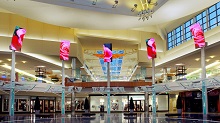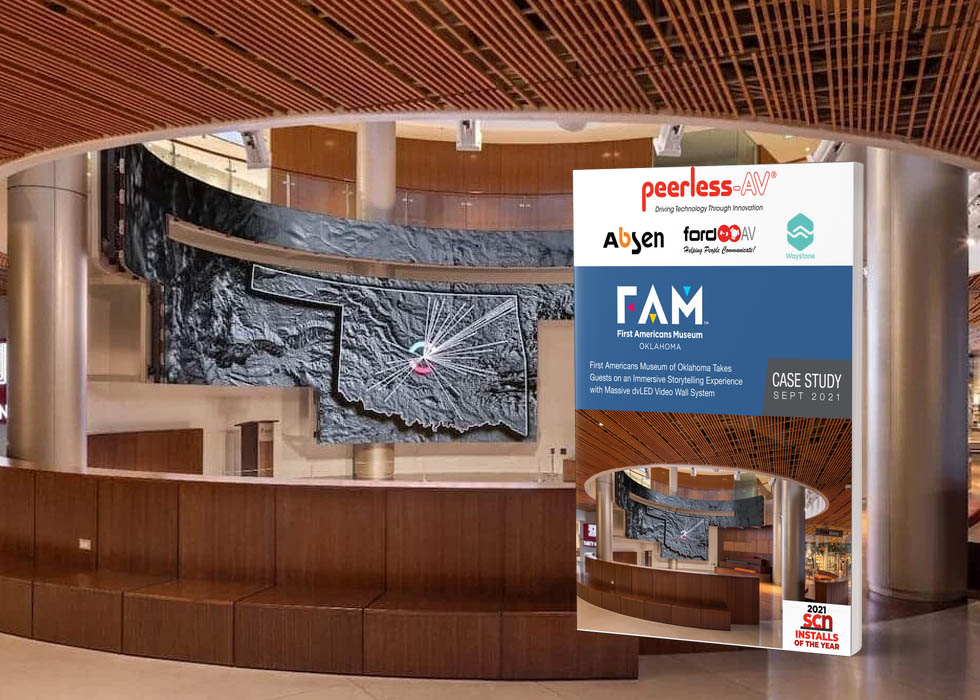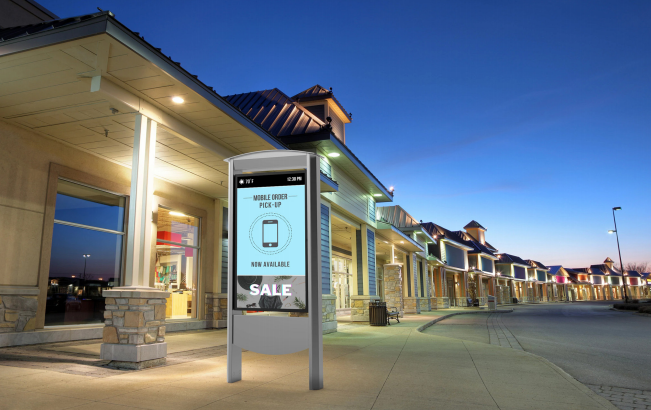Digital Signage Best Practices: Matching Content to Solution
By Monica Heck, Special to AVIXA
Conversations about digital signage usually revolve around the latest players and screens, compression formats and various technology advances that get content from A to B. Experts in the field agree, however, that the most successful signage networks depend not on investments in the latest technology, but on close consultation with the client about overall signage objectives — and content .
Murray Dameron, director of creative services for visual design at Mood Media, says plans for a digital signage network or installation should always start with content and the goals of signage strategy.
“The hardware side of things is pretty easy,” he says. “We typically start the conversation around content because most people are thinking about hardware and technology, not the content.”
The Importance of Aspect Ratio
 One of the first considerations is aspect ratio, says Brandon Bass, vice president of media at Codigo. “You want to start at the very beginning and think about design as a product of the screen that it’s going to go on,” he says. “The main thing there is designing for your aspect ratio.”
One of the first considerations is aspect ratio, says Brandon Bass, vice president of media at Codigo. “You want to start at the very beginning and think about design as a product of the screen that it’s going to go on,” he says. “The main thing there is designing for your aspect ratio.”
Bass says that 10 years ago, at the dawn of what we now call digital signage, all screens his company designed for were 4:3, standard TV aspect ratio. That was, of course, before the 16:9 widescreen aspect ratio emerged.
“Now we see unusual sizes, such as really long screens. But 16:9 is the typical aspect ratio, or 9:16 if it’s portrait,” said Bass. “We design to the capability of the screen and the video card of the player that’s powering the screen. A lot of times that’s 1920 x 1080 pixel ratios, so 1080p.”
He adds that often, the designed content is vector-based and will stretch to fill the screen, so the only things that don’t stretch flawlessly are video and still images, while text and vector graphics scale without losing quality.
“We’ll design a lot of content in a size like 1366 x 768, which is a little smaller, but it helps us keep file size down,” Bass says. “A lot of people are pushing content down to the screen through the Web, so we want to keep it lightweight.”
Dameron notes the emergence of what he terms “dynamic aspect ratio.”
“The ability to switch between different aspect ratios on the fly is being demanded more and more of us,” he explains. “Take the example of four separate menu boards, each showing one part of the menu. The client, however, also wants the menu to disappear periodically and content to play across all four screens. So now you’re designing content for both 16:9 standard screens and for a 4:1 videowall.”
Achieving Maximum Effect
Because aspect ratio is critically important, brand owners need to understand exactly what content they want to put on screen in order to achieve maximum effect.
“Often, brand owners will be looking to get as much mileage as possible out of existing content over various platforms,” says Andy Pitman, managing director of Kaleidovision and chairman of Music Concierge. “It’s relatively unlikely to have been shot in 4K in the first place. So from a pragmatic point of view, there’s no point in overspending on a screen with a high number of pixels. Realistically, a lot of the content probably doesn’t exist at that resolution — at the moment and for the foreseeable future.”
Purely from a picture quality perspective, matching the native resolution of each display is the best thing to do, according to Morgan Van Baren, global vice president and general manager of visual solutions at Mood Media. “In addition, it would be very rare not to use HDMI or DisplayPort or some kind of digital signal to display the content. That pixel-to-pixel ratio is really beneficial if you can have it,” he says.
Jorge Mira Boronat, creative director at Scala, laments that most people just want to achieve maximum resolution on-screen and seem to miss out on other key criteria.
“Depending on viewing distance, if say you are thirty meters away from a 42-inch screen, it doesn’t matter if it’s full HD or VGA. We don’t really notice,” Boronat says. “People don’t realize that resolution is dependent on distance and for me, that’s much more important than performance.”
Boronat says movement is important to making a screen come alive.
“Is it better to have high resolution or movement? We know both are not always possible when you have to meet a budget,” he concedes. “Depending on the technology you have, will you choose to run high-resolution static imagery or lower resolution moving content? For me, it makes more sense to use the resolution that allows us to make the most movement possible and in a size that is appropriate for the distance of the viewer.”
Boronat recommends that digital signage content emulate TV content, as opposed to Web content. “That requires an exercise with the communications department, because most companies are used to designing for paper or the Web.”
Location, Location
Most experts agree that content on a screen located in a busy reception area, where visitors pass swiftly, should differ from content on a screen in an area where people dwell.
“You want to make sure you use appropriately sized fonts and images,” says Bass. “A lot of it is about the pace of the content, so viewers have time to read the message but don’t get bored and stop watching it. It’s a tightrope act sometimes.”
Pitman offers the example of a social media campaign at restaurant chain TGI Fridays that involved customers sending in pictures of themselves taking their first bite of a burger. “The photos were coming up straight to the screen, so we were thinking about viewing distance and providing supporting text,” he explains. “You have to balance those so it’s all readable and digestible from so many feet across the restaurant.”
Matching content to orientation — landscape or portrait — is also a major consideration. For Bass, choosing widescreen over portrait better mimics the instincts of a human eye. “But for certain retail applications,” he says, “portrait may be more eye-catching. It depends a lot on the actual application.”
Go Big or Go Home
Digital signage designers have noticed a rise in the ambition and creativity of videowalls. But creating content for such installations comes at a cost.
“The easiest project to handle is the standard 16:9, as there is a lot of content available for that format,” said Bass. “If you put two widescreens side-by-side to make a long banner, it will be harder to find content to fit that space. Creating custom media is of course possible, but it starts getting expensive as everything you do has to be formatted to that particular aspect ratio.”
Pitman gives the example of the Shadow Lounge club in Soho, London, where his company worked with the interior designer and AV integrator to create an entire video experience over HD video screen pillars and LED ceiling panels.
“We shot a lot of the content for the video columns from scratch, because they were such a specific shape,” he explains. “For the ceiling area, a lot of the LED tiles were curved, so there was a lot of 3D rendering and modeling at the planning stage to enable everyone to visualize the final effect.”
In Denver, Colorado, this summer, Mood Media provided FirstBank with a live feed of the USA Pro Challenge, a popular bike race, on a 21-screen videowall at its flagship store in the city’s Union Square.
“This is an example where content leads,” says Van Baren. “The unique format of the screen, which wraps around a corner, is not a traditional aspect ratio. We had to adapt a TV signal recorded by a traditional camera onto this nontraditional screen and aspect ratio. That’s a lot of fun as you start zoning out your display and carving out some 16-by-9 parts of it.”
Ultimately, Scala’s Boronat believes digital signage content design should be about more than aspect ratio and format. It must also be about generating a feeling and achieving a connection with the audience.
“For example, maybe we want content to look more cinematic and we need ultra-wide formats to put viewers in a leisurely state of mind where they forget they’re watching a screen,” he explains. “If that is taken into account from the first moment, then the feeling we want to achieve further dictates the format and aspect ratio of the screen.”





